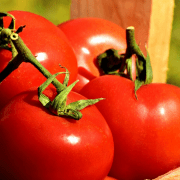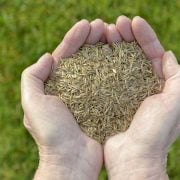Getting organized can be a real challenge if you experience ADHD symptoms. Luckily, there are many short-cuts that can help you stay focused and get the job done. This post is going to teach you how to break down seemingly monumental tasks into tiny, manageable chunks.
By the end, you’ll be ready to tackle clutter and get organized! By the way—you’ll find the tips in this post useful even if you don’t have ADHD symptoms. We could all use a little help staying on top of chores and keeping organized.
The Concept of Chunking
You may have heard this word before when trying to study for a test back when you were in school. Your teacher may have suggested that you take a bunch of facts or concepts like terrariums or aquariums and organize them in groups to help remember them.
In cognitive psychology, chunking is the process of grouping things together based on associations so that they are more easily remembered. Initially, chunking was a bottom-up process—taking a bunch of information and putting it together to create a whole.
However, it is also useful to see chunking as a top-down process—seeing a big task and breaking it up into smaller, more manageable tasks.
How to Chunk?
So, what’s an example of a chunkable task? Really, anything can be broken down into smaller tasks. For this quick example, we are going to use making breakfast—something that many of us forget to do, unfortunately!
You have this big task—making breakfast. You know that it ultimately ends with you enjoying a nice homecooked meal, but how do we get there?
Define the Task
First, we have to decide what we are making. This is important for our analogy because having a clear goal makes breaking the tasks up into chunks much easier. If you don’t know what you are going to make, you don’t know if you’ll need eggs, or milk or bacon—or all three!
Let’s decide on something quick and simple. Oatmeal. Great! Next, we need to define the steps.
Define the Steps
This part is the trickiest because there are surprisingly many ways to make oatmeal. Therefore, according to our analogy, there are many ways to break down large tasks into smaller tasks and dump everything into outdoor storage.
This is where many people get overwhelmed. It is very easy to get lost in the details and stress over the process itself. It is during this phase of the process that many people get discouraged.
In our analogy, the stakes aren’t terribly high—it’s just breakfast. But the stress and anxiety can be paralyzing when the stakes are high, such as when you are trying to clean a cluttered, dirty home or create a plan to pay off mounting debts.
This is the part of the process where you need to think with a clear and calm head.
You must realize that there isn’t one absolute method to reach your goal (hot oatmeal is the goal in this case, but it applies to anything). You should start at the end result and think backward.
Visualize the Process
If you imagine yourself eating oatmeal, you’ll probably see a bowl, a spoon, and, of course, the contents themselves. So you’ll likely need to pull together the necessary supplies for the task. In our metaphor, the supplies are what you’ll need to make and eat breakfast.
Extending the metaphor out into the real world, after visualizing the process, you should make a list of what you’ll need to perform the big task—whatever it may be.
Decide on a Logical Order of Steps — But Don’t Overthink It!
Ultimately, it doesn’t matter if you put the oatmeal in the bowl first or the milk. What matters is if you are planning to use the microwave or the stovetop. Don’t sweat the small details, instead focus on the decisions that affect the overall process.
After gathering the necessary supplies, get started! You get to enjoy a nice, hot breakfast.
Simple and Complex Tasks Are Managed the Same Way—It’s Just That The Stakes Are Higher
Though it seems rather childish to compare major tasks to the mundane preparation of breakfast, from a task management perspective, it’s actually not all that dissimilar. The point of using such a simple metaphor is to demonstrate the goals of chunking a larger task into smaller tasks. You end up using the same procedural planning techniques to make breakfast as you would use to do your taxes, restructure your finances, or completely reorganize your house.
What you actually do is vastly different, but the steps you take to decide on the process are exactly the same. That’s why, when faced with seemingly overwhelming tasks, you should remain calm and follow the same method you used to decide how best to make oatmeal.
To Sum Up Our Task Chunking Process
- Define the Task
- Work Backwards to Define the Steps
- Execute
Once you adopt this plan for getting stuff done, it shatters the illusion of scale that once left you feeling paralyzed into inaction. Bigger tasks are certainly more complicated, but the step-by-step process it requires follows the same path as making oatmeal. Whether you suffer from ADHD symptoms or not, putting one foot in front of the other is the way to walk a mile.
About the Author

Jenn Walker is a freelance writer, blogger, dog-enthusiast, and avid beachgoer operating out of Southern New Jersey. She writes on behalf of Klarity ADHD, an online ADHD treatment resource.














Comments